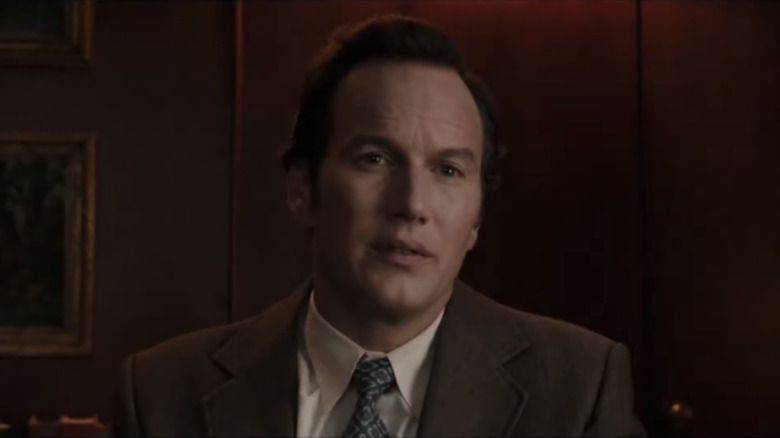The Terrifying True Story Behind The Conjuring: The Devil Made Me Do It
The movies in the "Conjuring" universe are known for their terrifying ties to reality. The majority of the films in the popular horror franchise are based on the careers of paranormal investigators Ed and Lorraine Warren, who spent their lives helping people afflicted by demons and various hauntings. From haunted houses and evil dolls to folklore from other countries, the "Conjuring" franchise links its movies together with surprising details that you may not notice at first glance.
The newest installation to come from the mind of James Wan, "The Conjuring: The Devil Made Me Do It," is centered on yet another infamous case in the Warren family's long and creepy work history. With Vera Farmiga returning as Lorraine and Patrick Wilson reprising his role as Ed, the upcoming supernatural horror flick is sure to bring some major scares — especially considering that it's based on a true story. Keep reading to learn about the real events that inspired the newest "Conjuring" classic.
The Conjuring: The Devil Made Me Do It is based on history
Much like the original "The Conjuring," the upcoming sequel is based on a true story: the trial of Arne Cheyenne Johnson. In 1981, 19-year-old Johnson was convicted of murdering his landlord Alan Bono after an argument involving Johnson's girlfriend Debbie Glatzel turned violent. Johnson's defense sparked media attention when they claimed he had been possessed by the Devil and could therefore not be held personally responsible for the crime. During the trial, Debbie's 11-year-old brother David testified that he had originally been possessed by demons, and after enlisting the help of Ed and Lorraine Warren, they were excised from his body — only to find a new host in Johnson (via People).
The case was the first in U.S. history to use the defense of demonic possession to deny culpability. However, presiding judge Robert Callahan refused to hear the defense or any evidence, saying, "I'm not going to allow the defense of demon possession, period" (via the Hartford Courant). Johnson was eventually convicted and went on to serve five years of a 10- to 15-year sentence.
The Johnson case is shrouded in controversy
After the case, Lorraine Warren wrote a book with author Gerald Brittle titled "The Devil in Connecticut" based on the events. When it was republished in 2006, David Glatzel and his brother Carl sued for libel. Carl claimed that the whole incident was a hoax by the Warrens, who had convinced them it would make the Glatzel family rich. Carl explained how the book damaged his life, saying, "I had to drop out of school in tenth grade due to the ridicule and negative attention the story brought and was unable to further my education. [...] I finally understood why I lost friends, relationships, business opportunities, and ultimately had to be ashamed of my own family name based upon a lie" (via MMD Newswire). However, Lorraine defended her work, reiterating that the possession was investigated by the Catholic Church and that they had tons of documentation.
Brittle also defended the book, telling The News-Times it was "based entirely on fact. It was written because the family wanted the story told, and I told their story. ... Just to be sure I got it right, the family got the manuscript before it went to the printer, and they vouched to its accuracy in writing. This is the claim of one man, and I think you'll find that he has his own agenda" (via Religion News Blog).
Whatever the truth may be, it's no mystery why the case has garnered so much attention. We're excited to see how the story unfolds in "The Conjuring: The Devil Made Me Do It" and just how much of the controversy is included in the film.


